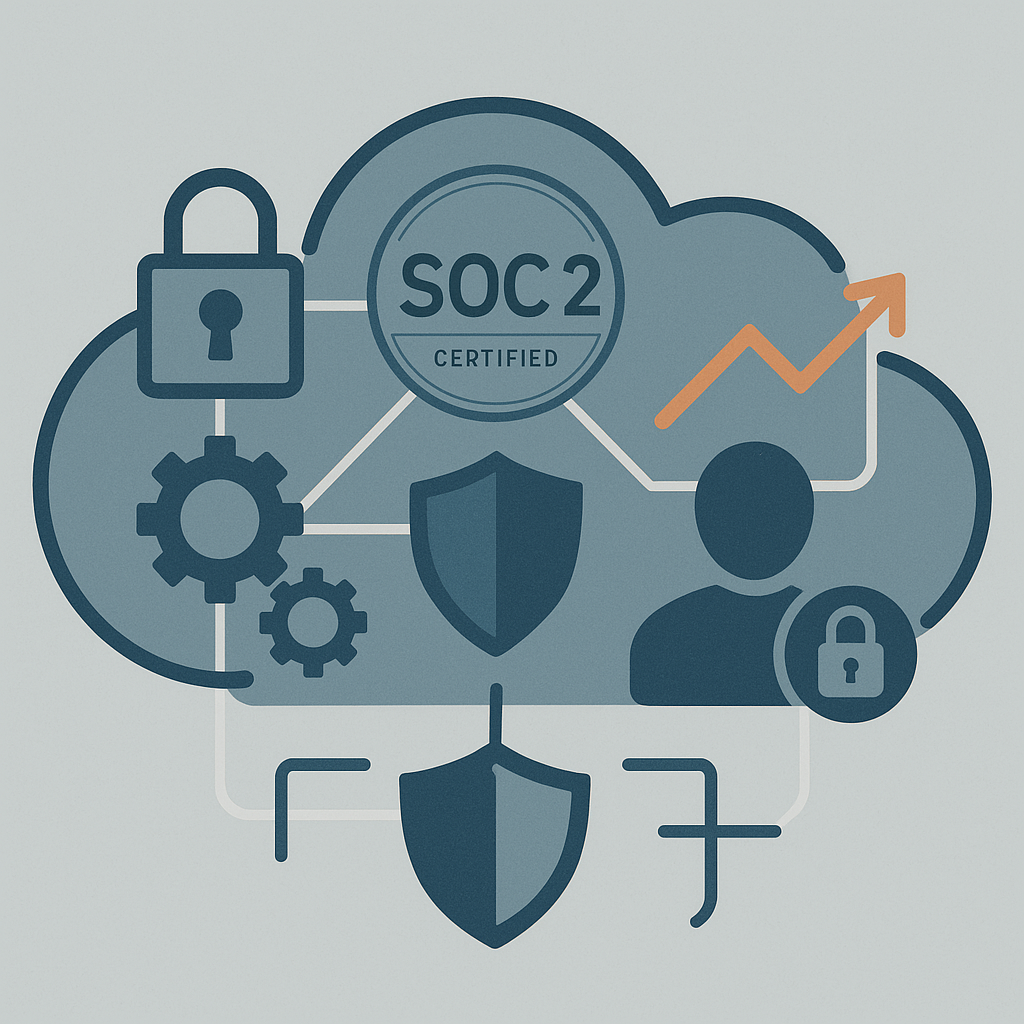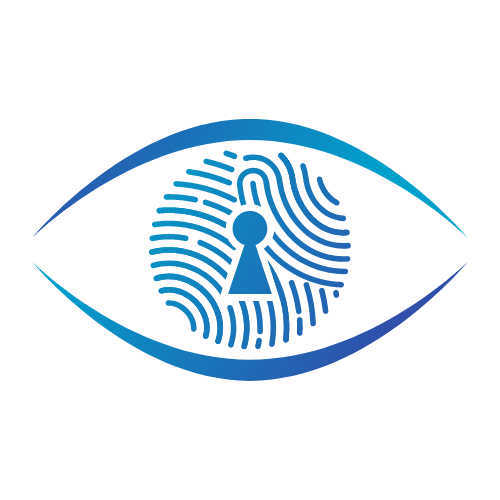SOC 2 Compliance for SaaS Companies: A Technical Deep Dive

In today's digital landscape, trust is paramount, especially for Software as a Service (SaaS) providers who handle sensitive customer data. SOC 2 (System and Organization Controls 2) compliance has emerged as a gold standard for SaaS companies to demonstrate their unwavering commitment to data security and privacy. This comprehensive framework, developed by the American Institute of Certified Public Accountants (AICPA), provides assurance to customers that their sensitive information is being managed securely and in accordance with industry best practices.
This article provides an in-depth technical examination of SOC 2 compliance specifically tailored for SaaS companies, highlighting the critical differences between Type I and Type II assessments, the detailed implementation process, and essential best practices for maintaining continuous compliance.
Understanding SOC 2 Compliance for SaaS
SOC 2 is a compliance framework designed to assess how service organizations manage customer data. It's particularly relevant for cloud providers, SaaS vendors, and other organizations offering web-based services that handle sensitive customer information. While not legally mandated, SOC 2 compliance has become increasingly essential for SaaS companies, especially those operating in industries dealing with sensitive data like healthcare and finance.
For SaaS providers, achieving SOC 2 compliance offers several key benefits:
- Enhanced customer trust and confidence.
- A significant competitive advantage in the marketplace.
- Entry into new, often larger, markets, particularly finance and healthcare, where SOC 2 is frequently a prerequisite.
- The ability to move upmarket into enterprise or government segments with stringent security requirements.
- Improved risk management processes and operational efficiency, reducing the likelihood of costly data breaches.
As industry experts note, SOC 2 compliance is becoming increasingly important, particularly when a SaaS product handles sensitive data. Many larger enterprise customers now require SOC 2 compliance as a condition of doing business.
The Five Trust Services Criteria (TSC)
SOC 2 compliance is built upon five Trust Services Criteria (TSC) that define the scope of the assessment. SaaS companies can choose which criteria to include in their audit based on their specific business operations and customer requirements. However, the Security criterion is mandatory for all SOC 2 reports.
The five TSC are:
- Security (Common Criteria): This foundational principle ensures systems are protected against unauthorized access, use, or disclosure. Key controls include security policies, awareness training, risk assessment, data classification and encryption, access management, security monitoring, incident management, and change management.
- Availability: This criterion ensures that systems are available for operation and use as committed or agreed upon. Critical controls involve disaster recovery and business continuity planning, data backup and restoration, redundant infrastructure, network security, and capacity planning.
- Processing Integrity: This confirms that system processing is complete, accurate, timely, and authorized. Key technical controls include data validation, transaction logging, automated processing controls, and real-time monitoring for critical processes.
- Confidentiality: This ensures that information designated as confidential is protected according to policy or agreements. Technical implementations include data encryption (at rest and in transit), strong access controls, authentication mechanisms, audit trails, and secure data transfer protocols.
- Privacy: This addresses how personal information is collected, used, retained, disclosed, and destroyed. Controls include choice and consent mechanisms, collection limitation practices, access and disclosure restrictions, and data retention and disposal procedures.
SaaS companies must carefully consider their services and customer expectations to determine which of these criteria, beyond the mandatory Security, are most relevant to their SOC 2 audit.
SOC 2 Type I vs. Type II: Understanding the Difference
SOC 2 audits result in either a Type I or a Type II report, each providing a different level of assurance.
- SOC 2 Type I: This report evaluates the design and implementation of an organization's controls at a specific point in time, providing a "snapshot" of the control environment on a particular date. The audit focuses on whether the controls are appropriately designed and implemented to meet the selected Trust Services Criteria. Evidence examined includes documentation, personnel interviews, and system configurations as they exist at that moment. A Type I report serves as an initial validation that appropriate security measures have been designed and implemented, making it a common starting point for organizations beginning their SOC 2 journey. It can be a practical choice for demonstrating compliance quickly.
- SOC 2 Type II: This report offers a more comprehensive assessment by examining controls over an extended period, typically between 3 and 12 months. This time-based evaluation allows auditors to verify that controls not only exist but also operate effectively and consistently over time. A Type II audit builds upon the Type I assessment by adding the testing of operational effectiveness through the examination of historical evidence like logs, access records, and incident responses. The extended timeframe provides a more realistic picture of the organization's security posture, offering a greater level of trust to customers and business partners. Type II reports are generally preferred in vendor risk assessments due to their evidence-based nature.
The key difference lies in the time dimension and the assurance level. Type I is a point-in-time assessment focused on design and implementation, while Type II evaluates design, implementation, and operating effectiveness over a period. Consequently, Type II requires more effort and provides a higher level of assurance. Many organizations strategically begin with Type I to establish a foundation before progressing to the more rigorous Type II assessment.
The SOC 2 Compliance Process: Technical Steps for SaaS
Achieving SOC 2 compliance involves a structured approach with several key technical steps:
- Define Objectives and Scope & Select Trust Services Criteria: Clearly identify the purpose of seeking SOC 2 compliance and define the scope of the audit, including the relevant systems, applications, and data. Select the Trust Services Criteria that are most relevant to your SaaS offering and customer needs, always including Security.
- Conduct a Risk Assessment and Gap Analysis: Perform a thorough internal risk assessment to identify potential threats and vulnerabilities specific to your SaaS environment. Then, conduct a gap analysis comparing your existing security controls against the selected SOC 2 requirements to pinpoint missing controls and areas needing improvement.
- Implement Controls and Remediate Gaps: Design and implement the necessary security controls, policies, and procedures to address the identified risks and gaps. This involves technical implementations like access controls, encryption, monitoring tools, incident response plans, and change management processes. Ensure these controls align with the selected TSC and are appropriate for your organization's maturity level.
- Perform a Readiness Assessment (Pre-Audit): Before engaging an external auditor, conduct an internal audit or readiness assessment to validate that your controls are designed and operating effectively. This "practice run" helps identify and fix any remaining issues and ensures you have the necessary evidence to demonstrate compliance.
- Engage a SOC 2 Auditor: Select an independent CPA firm with expertise in SOC 2 audits, preferably within the SaaS industry. Ensure they are accredited and have a strong understanding of cloud environments and SaaS operations.
- Prepare for the Audit Process: Gather all necessary documentation and evidence to support the auditor's evaluation of your controls. This includes system descriptions, policies, procedures, logs, configurations, and other relevant records. Be prepared to cooperate with the auditors through interviews, walkthroughs, and testing.
- Undergo the Audit: The auditor will assess the design and, for Type II, the operational effectiveness of your controls against the selected TSC. They will request evidence and documentation to validate your compliance efforts.
- Address Audit Findings and Remediate: Review the auditor's findings and implement any necessary remediation steps to address identified exceptions or weaknesses.
- Receive and Distribute the SOC 2 Report: Upon successful completion, you will receive the official SOC 2 report from the auditor, which you can then share with customers and stakeholders under appropriate confidentiality agreements.
Maintaining SOC 2 Compliance: Ongoing Technical Best Practices
SOC 2 compliance is not a one-time achievement but requires ongoing maintenance and continuous improvement. Implementing the following technical best practices is crucial for sustaining compliance year-round:
- Schedule Annual Audits in Advance: Plan your SOC 2 audits well ahead of time, especially for Type II, which requires evidence collection over a specific period.
- Perform Regular Risk Assessments: Conduct annual or more frequent risk assessments to identify new vulnerabilities and changes in your risk landscape due to business growth, technology updates, or emerging threats. Include third-party risk assessments to evaluate your vendors' security practices.
- Review and Update Policies and Procedures: Revisit and update your information security policies, procedures, and documentation at least annually to ensure they remain aligned with evolving business needs, compliance requirements, and technological changes.
- Conduct Access Reviews: Perform periodic reviews of user access rights to ensure adherence to the principle of least privilege. Remove access for individuals who no longer require it and promptly address any excessive permissions.
- Test Incident Response Plans Regularly: Conduct simulations or tabletop exercises to test your incident response procedures and ensure your team is prepared to handle security incidents effectively. Document lessons learned and update plans accordingly.
- Perform Vulnerability Scanning and Monitoring: Implement regular vulnerability scanning and penetration testing to identify weaknesses in your systems proactively. Utilize continuous monitoring tools to detect anomalies and potential threats in real-time.
- Maintain Evidence of Control Effectiveness: Continuously gather and maintain evidence (logs, audit trails, reports) throughout the year to demonstrate the ongoing effectiveness of your controls, aligning with the cadence defined in your policies.
- Review Data Management Practices: Regularly evaluate how sensitive data is collected, stored, processed, and disposed of. Ensure that encryption is consistently applied for data at rest and in transit, and verify compliance with confidentiality commitments.
- Mitigate Identified Risks Promptly: Develop and implement remediation plans for any risks or gaps identified through risk assessments, vulnerability scans, or internal audits. Document all mitigation efforts thoroughly.
- Automate Compliance Processes: Leverage compliance automation tools to streamline evidence collection, monitoring, and reporting. Automation reduces manual workload, minimizes errors, and ensures consistent adherence to SOC 2 requirements.
- Foster Cross-Team Collaboration: Involve stakeholders from IT, legal, HR, DevOps, and other relevant departments in maintaining compliance. Regular communication ensures alignment across teams and prevents silos.
- Implement Strict Change Management: Maintain rigorous change management procedures to ensure that system modifications do not compromise security controls. Document all changes and assess their potential impact on compliance.
- Conduct Regular Internal Audits: Perform periodic internal assessments to verify that controls remain effective and identify any compliance drift before the formal annual audit.
- Manage Vendors Effectively: Implement robust processes for evaluating and monitoring third-party vendors who may impact your security posture. Ensure they maintain appropriate security controls and consider their SOC 2 compliance.
Here’s a consolidated matrix comparing SOC reports (SOC 1, SOC 2, SOC 3) and their Type I vs. Type II distinctions, based on the search results:
Matrix 1: SOC Standards Comparison
| Aspect | SOC 1 | SOC 2 | SOC 3 |
|---|---|---|---|
| Focus | Controls relevant to financial reporting126 | Controls related to security, availability, processing integrity, confidentiality, and privacy (Trust Services Criteria)134 | Public-facing summary of SOC 2 findings1347 |
| Audience | User entities, auditors, internal stakeholders146 | Restricted to clients, auditors, and stakeholders146 | General public (marketing tool)134 |
| Detail Level | Detailed controls over financial processes125 | Technical details of security controls and test results147 | High-level overview without technical specifics134 |
| Public Access | Private; shared under NDA16 | Private; shared under NDA16 | Publicly distributable1347 |
| Report Types | Type I (design) or Type II (design + effectiveness)148 | Type I (design) or Type II (design + effectiveness)147 | Only based on SOC 2 Type II; no Type I/II distinction1347 |
Matrix 2: Type I vs. Type II Reports
| Aspect | Type I | Type II |
|---|---|---|
| Scope | Evaluates control design at a specific point in time147 | Assesses control design and operational effectiveness over 3–12 months1478 |
| Evidence | Snapshot of policies, configurations, and documentation178 | Historical logs, incident reports, and continuous monitoring data1478 |
| Assurance Level | Validates controls are designed appropriately147 | Confirms controls operate effectively over time1458 |
| Effort | Less resource-intensive; faster to obtain157 | Requires sustained compliance; more rigorous1478 |
| Use Cases | - Initial compliance validation - Rapid customer assurance17 | - Enterprise contracts - Long-term trust building1457 |
Key Notes
- SOC 3 is only issued for organizations that have completed a SOC 2 Type II audit147.
- Type II reports are more valuable for enterprise clients due to their focus on operational effectiveness157.
- SOC 1 is mandatory for organizations impacting clients’ financial statements (e.g., payroll processors, financial institutions)126.
Conclusion
For SaaS companies, achieving and maintaining SOC 2 compliance is a significant investment in security and customer trust. While a Type I certification offers a valuable initial step by evaluating controls at a specific point, a Type II certification provides a more robust assurance by verifying control effectiveness over time.
The decision between pursuing Type I or Type II should be based on your organization's maturity, resources, customer requirements, and the competitive landscape. Many organizations strategically begin with Type I to establish a foundational understanding of their control environment before progressing to the more comprehensive Type II.
Ultimately, the true value of SOC 2 compliance lies not just in obtaining the report but in the development and continuous improvement of a robust security program that protects both your organization and your valued customers. By diligently implementing and maintaining the technical controls required for SOC 2 compliance, SaaS companies can build lasting trust, mitigate risks effectively, and position themselves for sustainable growth in an increasingly security-conscious marketplace.





